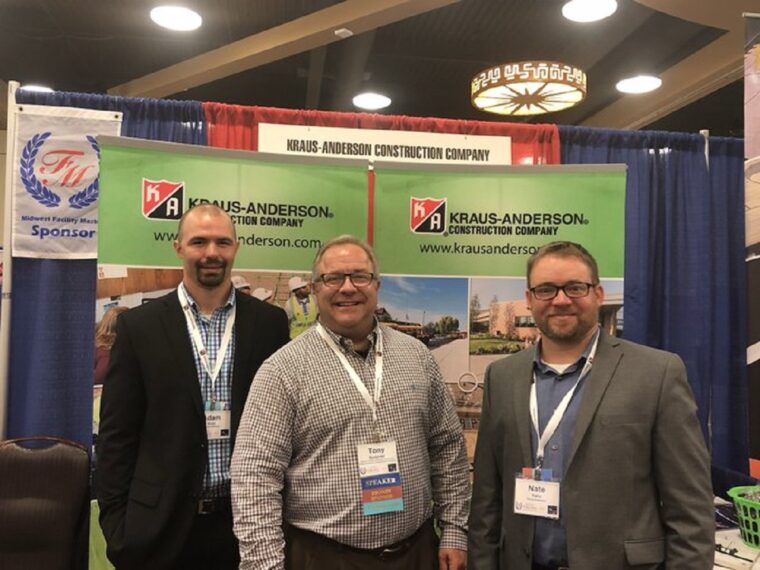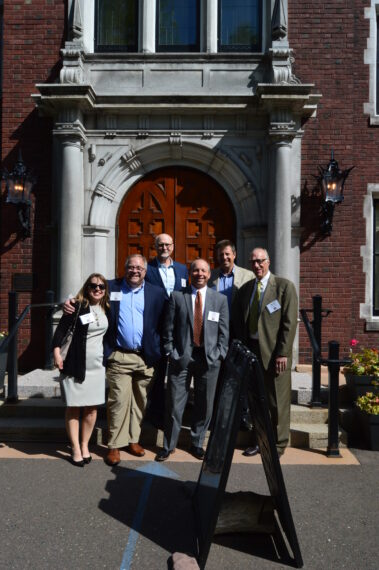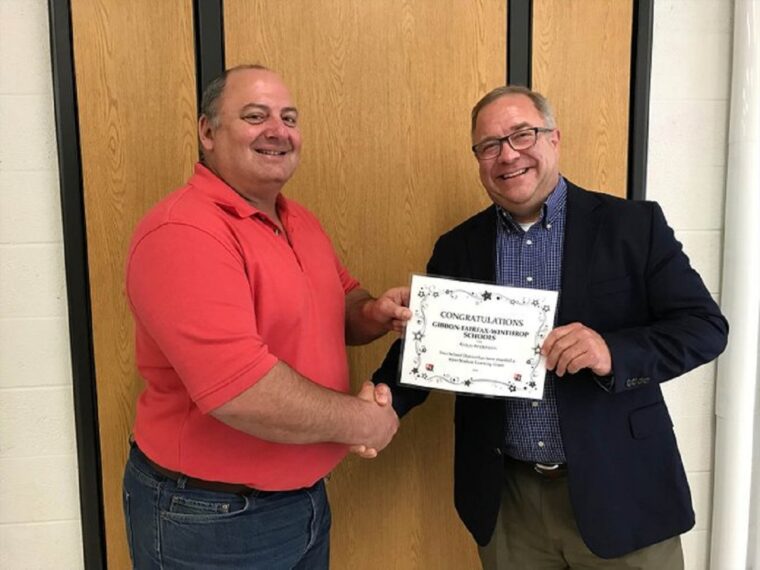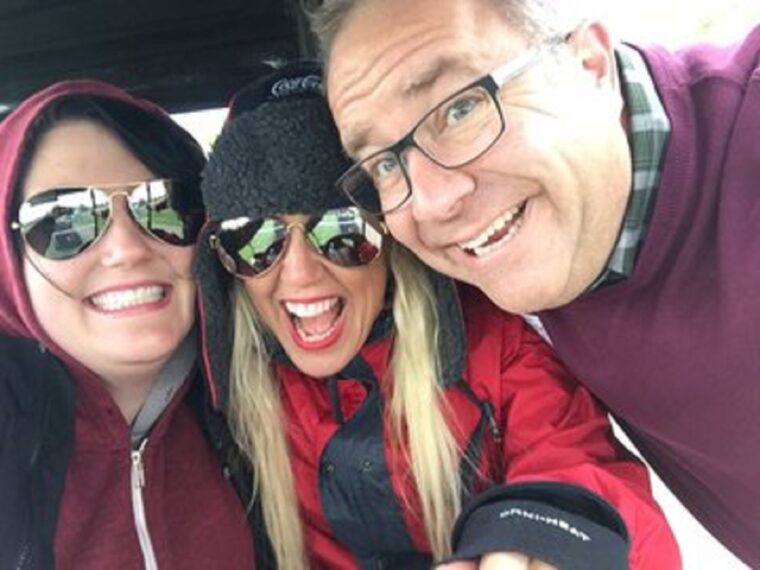Tony Sjolander Reflects on Rewarding Career Ahead of Retirement
Kraus-Anderson’s Director of Project Planning / Development (Construction) Tony Sjolander retires in August. As he transitions into this next phase, we asked him to reflect on his successful career and influential time at KA.
You graduated from the University of Wisconsin—Stout with a degree in Industrial Technology: Building Construction. What led you to that selection?
SJOLANDER: Growing up, my dad, a carpenter and cabinet maker, had a wood shop in the garage. It was the envy of several neighborhood kids. We constantly built go-carts, bird houses, and a variety of other projects. For eight years — after school, on weekends, and throughout the summer — I worked as a carpenter for my dad’s resident remodeling company, Sjolander and Son Construction.
As a high school senior, I took the carpentry entrance exam at St. Paul Technical College but was unable to get into the program due to an 18-month-long waiting list. My mom encouraged me to consider the construction program at Stout, from which I graduated in 1986 after being fortunate enough to spend a semester abroad studying in Wales.
You have deep experience in helping school districts achieve “Yes” votes on referendum efforts. It seems to be both a calling and a career for you. How did you arrive at this work?
SJOLANDER: In the late 1980s, I was working as a project manager when my boss at E&V Construction Managers offered me a job as Director of Business Development. Although I had previously been working on data centers and healthcare projects, one of our major sectors was K-12 Education. I quickly learned that securing funding, which required a public vote, would determine the success (or failure) of our BD efforts in the K-12 market. The Michigan office’s Vice President, someone with a successful track record, taught me how to provide quality referendum consulting services.
I later spent 10 years working at Adolfson & Peterson Construction, where I became a Trustee for the District 279 Foundation. I served for nine years, one year as President. It was through my experience as a Trustee that my passion for the K-12 mission, specifically the character education initiative, developed. My wife is a teacher and received a master’s degree in education. Throughout the years, we’ve had many interesting conversations about the importance of developing soft/interpersonal skills. The 279 Foundation raised roughly $250K per year for innovative classroom grants, and each year, about $80K went toward the character education initiative.
Later in my career, I worked at DLR Group, an international K-12 design firm. Working for an architectural/engineering firm allowed me to see K-12 education from a different perspective. The construction and design of the building play a major role in preparing students for success in their education, careers, and lives. School buildings serve as teaching tools for educators. As a member of an incredibly talented Kraus-Anderson K-12 team, it has been my pleasure to help make a difference in communities by advocating for buildings that will best prepare students for success.

You joined Kraus-Anderson in 2016, though it’s hard to believe you haven’t been here longer. What brought you to KA?
SJOLANDER: I knew a few people at Kraus-Anderson and discussed the possibility of coming to work for the company. I was attracted to KA because of the culture— one with great respect for employees, partners, and clients alike. Since joining KA, all expectations have been exceeded. Simply said, “Always do the right thing,” best describes my experience with our KA culture. The people I’ve worked with at KA are quality human beings in and outside the workplace. I’ve worked with a team of talented professionals. Everyone says they have the best people, and I’ve come to the conclusion that KA truly does. The fact that 80-90% of our work comes from repeat or referred clients reinforces this point. Kraus is a special place to work.

You’ve worked with 100+ school districts on bond elections, working with countless stakeholders to overcome barriers and align all in support of shared visions. How do we distinguish our team from our competitors?
SJOLANDER: Everyone needs to be listened to and feel heard. When people have a say in the project scope, they are much more likely to support a ballot question. Five years ago, we didn’t have the benefit of community-wide surveys. It was then that KA’s Gary Benson coined the phrase, “Don’t let your referendum be your survey.” The introduction of these surveys helps to inform the community of challenges, solutions, tax updates, and more — well before it’s time to vote. Understanding each person’s unique “why” and letting that fuel the campaign is really what drives the referenda.
Fortunately, I work with people who want to make a difference— people of action, not just words. Clients who hire our team know we genuinely care about helping their kids, community, and school district succeed. Our clients quickly learn of our authenticity and success.

Can you briefly trace some of the major trends or shifts in drivers of school referendums?
SJOLANDER: People are questioning the “college for all” narrative and more openly discuss the decision to carry significant student loan debt.
Career and Technical Education (CTE) programs are popping up more frequently in middle and high schools to expose students to a variety of career pathways, including the trades, and help them discover where their passions lie.
How students need to be prepared for the emerging career and job requirements is changing. Flexible learning spaces are increasing in popularity and enable collaborative learning in small, medium, and large group settings.
Safety and security related to building entrances, drop-off, and parking areas are top of mind for community members.
What school districts are on your shortlist for “Most Memorable,” and why?
SJOLANDER: Three districts immediately come to mind— Rock Ridge, White Bear Lake, and Hatton.
Rock Ridge was by far the most difficult referendum because of the decades-old competition between the Iron Range cities of Eveleth, Virginia, and Gilbert. Each of these cities has a strong attachment to their individual high schools that the mining companies built 100+ years ago. In the end, the community came together in support of the consolidation and the $181 million referendum for a new high school and two new elementary schools.
White Bear Lake had a $326 million ballot question— the largest school bond referendum in Minnesota history, and it was where my wife and I grew up and graduated from high school.
In Hatton, North Dakota, 91.6% of people voted “Yes.” It felt great to garner so much support.

What advice would you give to another person entering this profession?
SJOLANDER: Know your “why.” To make a difference — for students, the community, and my coworkers — is my “why.” I appreciate working with those who are mission-driven, rather than financially-driven. I am fortunate to have genuinely loved what I do. Life is too short to have done otherwise.
Closing thoughts?
SJOLANDER: The quality people in our K-12 group give me complete confidence that our clients will be taken care of throughout current and future projects. I am grateful to have served with such a great team of people and to have worked with such an extraordinary organization.

CATEGORY: Construction